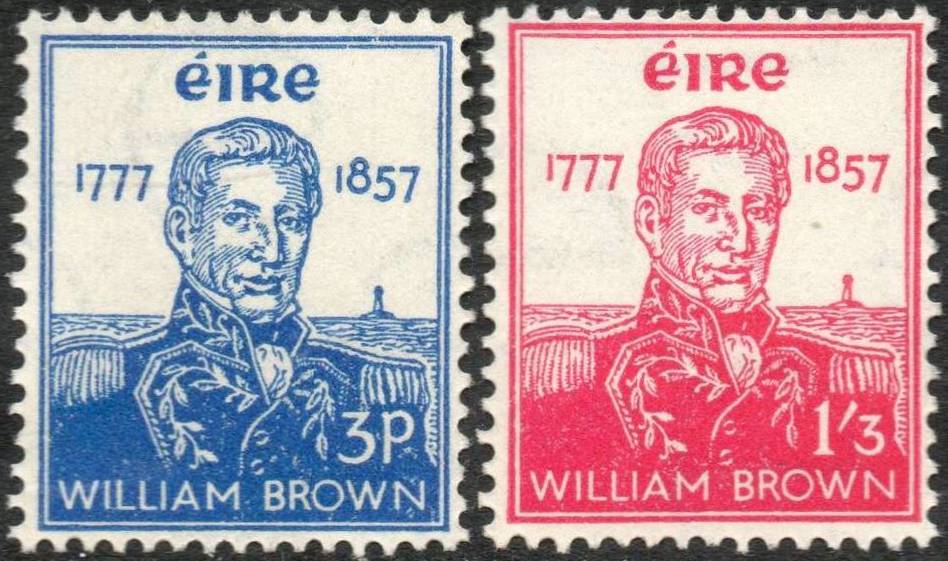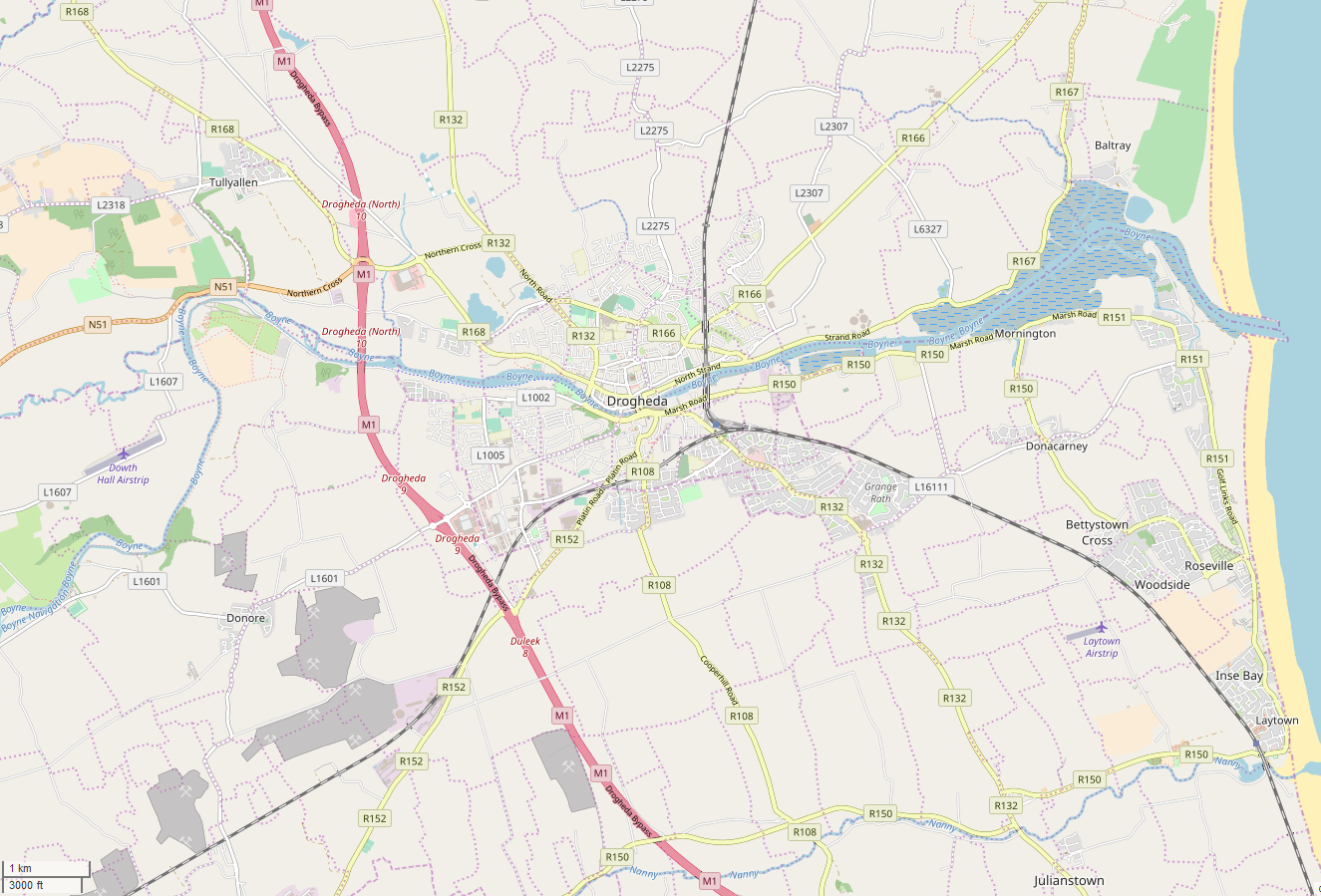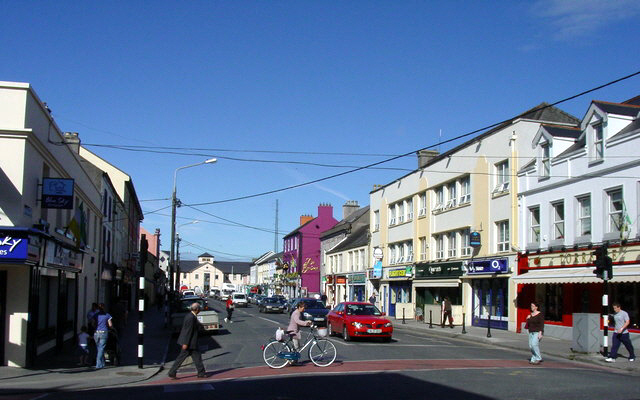|
Seán O'Sullivan (painter)
Seán O'Sullivan (20 June 1906 – 3 May 1964) was an Irish people, Irish Painting, painter and designer known for his portraits and stamp designs. Early life and family O'Sullivan was educated at Synge Street CBS in Dublin and went on to study drawing at the National College of Art and Design, Dublin Metropolitan School of Art. Here, came to the attention of headmaster George Atkinson (artist), George Atkinson who arranged a three-month placement for him to study lithography at the Central School of Arts and Crafts in London. While in London, O'Sullivan met painter Renée Mouw, whom he soon married. The pair studied in Paris before moving to Dublin. He studied painting in Paris at Colarossi's and La Grande Chaumiere. The couple had two daughters, Julian O'Sullivan and Terry Myler. Myler is a book illustrator. Career He began exhibiting at the Royal Hibernian Academy (RHA) in 1926, at the age of 20, contributing an average of six paintings a year until his death. Prim ... [...More Info...] [...Related Items...] OR: [Wikipedia] [Google] [Baidu] |
Irish People
The Irish ( or ''Na hÉireannaigh'') are an ethnic group and nation native to the island of Ireland, who share a common ancestry, history and Culture of Ireland, culture. There have been humans in Ireland for about 33,000 years, and it has been continually inhabited for more than 10,000 years (see Prehistoric Ireland). For most of Ireland's recorded history, the Irish have been primarily a Gaels, Gaelic people (see Gaelic Ireland). From the 9th century, small numbers of Vikings settled in Ireland, becoming the Norse-Gaels. Anglo-Normans also Norman invasion of Ireland, conquered parts of Ireland in the 12th century, while Kingdom of England, England's 16th/17th century Tudor conquest of Ireland, conquest and Plantations of Ireland, colonisation of Ireland brought many English people, English and Scottish Lowlands, Lowland Scottish people, Scots to parts of the island, especially the north. Today, Ireland is made up of the Republic of Ireland (officially called Republic of Irela ... [...More Info...] [...Related Items...] OR: [Wikipedia] [Google] [Baidu] |
An Béal Bocht
(The Poor Mouth) is a 1941 novel in Irish by Brian O'Nolan (better known by his pen name Flann O'Brien), published under the pseudonym "Myles na gCopaleen". It is regarded as one of the most important Irish-language novels of the twentieth century. An English translation by Patrick C. Power appeared in 1973. Stan Gebler Davies wrote: "''The Poor Mouth'' is wildly funny, but there is at the same time always a sense of black evil. Only O'Brien's 'sic''genius, of all the writers I can think of, was capable of that mixture of qualities." Background The book is a kindly parody of the genre of Gaeltacht autobiographies, such as Tomás Ó Criomhthain's autobiography (The Islandman), or Peig Sayers' autobiography ''Peig'', which recounts her life, especially the latter half, as a series of misfortunes in which much of her family die by disease, drowning or other mishap. Books of this genre were part of the Irish language syllabus in the Irish school system and so were mandatory re ... [...More Info...] [...Related Items...] OR: [Wikipedia] [Google] [Baidu] |
Sir William Rowan Hamilton
Sir William Rowan Hamilton (4 August 1805 – 2 September 1865) was an Irish astronomer, mathematician, and physicist who made numerous major contributions to abstract algebra, classical mechanics, and optics. His theoretical works and mathematical equations are considered fundamental to modern theoretical physics, particularly his reformulation of Lagrangian mechanics. His career included the analysis of geometrical optics, Fourier analysis, and quaternions, the last of which made him one of the founders of modern linear algebra. Hamilton was Andrews Professor of Astronomy at Trinity College Dublin. He was also the third director of Dunsink Observatory from 1827 to 1865. The Hamilton Institute at Maynooth University is named after him. Early life Hamilton was the fourth of nine children born to Sarah Hutton (1780–1817) and Archibald Hamilton (1778–1819), who lived in Dublin at 29 Dominick Street, later renumbered to 36. Hamilton's father, who was from Dublin, worked ... [...More Info...] [...Related Items...] OR: [Wikipedia] [Google] [Baidu] |
Minister For Posts And Telegraphs
The Minister for Posts and Telegraphs () was the holder of a position in the Government of Ireland (and, earlier, in the Executive Council of the Irish Free State). From 1924 until 1984 – when it was abolished – the minister headed the Department of Posts and Telegraphs (also known as the P&T in English and P⁊T in Irish, and later stylised as p+t), the government-run postal, telegraph and telephone service covering the Republic of Ireland. History The office of Minister for Posts and Telegraphs was created by the Ministers and Secretaries Act 1924, which reorganised the Irish system of government shortly after the establishment of the Irish Free State in 1922. The Minister exercised those functions which had formerly been exercised by the Postmaster General of the United Kingdom. Legislation in 1831 had amalgamated the earlier offices of Postmaster General of Great Britain and Postmasters General of Ireland, which became a jointly held role in the administration of the ... [...More Info...] [...Related Items...] OR: [Wikipedia] [Google] [Baidu] |
Commemorative Stamp
A commemorative stamp is a postage stamp, often issued on a significant date such as an anniversary, to honor or commemorate a place, event, person, or object. The ''subject'' of the commemorative stamp is usually spelled out in print, unlike definitive stamps which normally depict the subject along with the denomination and country name only. Many postal services issue several commemorative stamps each year, sometimes holding first day of issue ceremonies at locations connected with the subjects. Commemorative stamps can be used alongside ordinary stamps. Unlike definitive stamps that are often reprinted and sold over a prolonged period of time for general usage, commemorative stamps are usually printed in limited quantities and sold for a much shorter period of time, usually, until supplies run out. First commemoratives There are several candidates for the title of the first commemorative. A 17-cent stamp issued in 1860 by New Brunswick, showing the Prince of Wales in antic ... [...More Info...] [...Related Items...] OR: [Wikipedia] [Google] [Baidu] |
Irish Museum Of Modern Art
The Irish Museum of Modern Art (), also known as IMMA, is Ireland's leading national institution for the collection and presentation of modern and contemporary art. It is located in Kilmainham, Dublin. History Irish art collector Gordon Lambert met with Taoiseach Charles Haughey and "told him if the State would establish a gallery he would donate his collection." The Irish Museum of Modern Art was established by the Government of Ireland in 1990. It was officially opened on 25 May 1991 by Haughey. Its first Director was Declan McGonagle, who served for 10 years. He was followed by Enrique Juncosa, and then Sarah Glennie. Annie Fletcher has been Director since 2018. Building and grounds The Irish Museum of Modern Art is housed in the 17th-century Royal Hospital Kilmainham. The Royal Hospital was founded in 1684 by James Butler, the Duke of Ormonde and Viceroy to Charles II, as a home for retired soldiers and continued in that use for almost 250 years. The Royal Hospi ... [...More Info...] [...Related Items...] OR: [Wikipedia] [Google] [Baidu] |
Drogheda
Drogheda ( , ; , meaning "bridge at the ford") is an industrial and port town in County Louth on the east coast of Ireland, north of Dublin. It is located on the Dublin–Belfast corridor on the east coast of Ireland, mostly in County Louth but with the south fringes of the town in County Meath, north of Dublin city centre. Drogheda had a population of 44,135 inhabitants in 2022, making it the List of settlements on the island of Ireland by population, eleventh largest settlement by population in all of Ireland, and the largest town in Ireland, by both population and area. It is the second largest in County Louth with 35,990 and sixth largest in County Meath with 8,145. It is the last bridging point on the River Boyne before it enters the Irish Sea. The UNESCO World Heritage Site of Newgrange is located west of the town. Area Drogheda was founded as two separately administered towns in two different territories: Drogheda-in-Kingdom of Meath, Meath (i.e. the Lordship of Mea ... [...More Info...] [...Related Items...] OR: [Wikipedia] [Google] [Baidu] |
Tullamore
Tullamore (; ) is the county town of County Offaly in Republic of Ireland, Ireland. It is on the Grand Canal (Ireland), Grand Canal, in the middle of the county, and is the fourth most populous town in the Midland Region, Ireland, Midlands Region, with 15,598 inhabitants at the 2022 census of Ireland, 2022 census. The town retained Gold Medal status in the National Tidy Town Awards in 2015 and also played host to the World Sheep Dog Trials in 2005, which attracted international interest in the region. The Tullamore Show is held near the town every year. The town's most famous export is Tullamore Dew – an Irish whiskey distilled by Tullamore Distillery – that can be traced back to 1829. The Old Tullamore Distillery, original distillery was shut down in 1954. The brand was later resurrected, but at first was produced at the New Midleton Distillery, Midleton Distillery in County Cork, Cork. However, in 2014, the brand's new owners, William Grant & Sons, invested in a ... [...More Info...] [...Related Items...] OR: [Wikipedia] [Google] [Baidu] |
Ballintogher
Ballintogher () is a village in County Sligo, Ireland. It is located approximately 8 kilometers southeast of the county town of Sligo on the R290 road between Ballygawley to the west and Dromahair in County Leitrim to the north-east. Known as "The Town of the Causeway", Ballintogher is situated near Lough Gill, and the " Lake Isle of Innisfree" made famous by the poet W. B. Yeats. Ballintogher was located near the Sligo, Leitrim and Northern Counties Railway The Sligo, Leitrim and Northern Counties Railway (SL&NCR) was a railway in counties Cavan, Fermanagh, Leitrim and Sligo in north-west Ireland. It consisted of one main line, with no branch lines and remained privately owned until its closure ..., which was begun in the 1870s and closed in 1957. The village had a population of 331 people as of the 2016 census. References Towns and villages in County Sligo {{Sligo-geo-stub ... [...More Info...] [...Related Items...] OR: [Wikipedia] [Google] [Baidu] |
Valentin Iremonger
Valentin Iremonger (14 February 1918 – 22 May 1991) was an Irish diplomat and poet. He was born on Valentine's Day in Sandymount, Dublin and joined the diplomatic service. He served as Irish Ambassador to Sweden, Norway, Finland, India, Luxembourg and Portugal. His poetry collections include ''One Recent Evening'' (1944, with Robert Greacen and Bruce Williamson), ''On the Barricades'' (1944, with Robert Greacen and Bruce Williamson) ''Reservations'' (1950), ''Horan's Field and Other Reservations'' (1972), and ''Sandymount'' (1988). In 1945 he won the Æ Memorial Prize for a manuscript collection of poems.''Irish Times'', "A.E. MEMORIAL PRIZE, 1945", 18 December 1945 He was poetry editor of the literary magazine ''Envoy'' from 1949 to 1951. He also produced translations from the Irish language, including ''Dialann Deoraí'' by Dónall Mac Amhlaigh, (''An Irish Navvy'', 1964); and ''Rotha Mór an tSaoil'' by Micí Mac Gabhann (''The Hard Road to Klondike'', 1973), and a tra ... [...More Info...] [...Related Items...] OR: [Wikipedia] [Google] [Baidu] |




